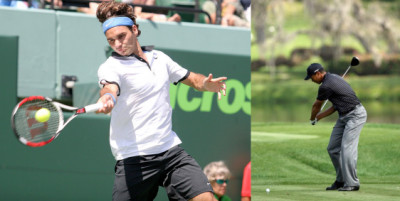Anatomy of Tennis Elbow
Tennis elbow, involves the muscles and tendons of your forearm. Your forearm muscles extend your wrist and fingers. Your forearm tendons — often called extensors — attach the muscles to bone. They attach on the lateral epicondyle (on the outside of the elbow).

Cause of Tennis Elbow Pain
Overuse
Recent studies show that tennis elbow pain is often due to damage to a specific forearm muscle. The extensor carpi radialis brevis (ECRB) muscle helps stabilize the wrist when the elbow is straight. This occurs during a tennis groundstroke, for example, or the leading elbow (left elbow in a right handed player) during the downswing of a golfer.
When the ECRB is weakened from overuse, microscopic tears form in the tendon where it attaches to the lateral epicondyle. This leads to inflammation and tennis elbow pain. The ECRB may also be at increased risk for damage because of its position. As the elbow bends and straightens, the muscle rubs against bony bumps. This can cause gradual wear and tear of the muscle over time.

Activities
Athletes are not the only people who get golfer’s or tennis elbow pain. Many people with tennis or golfer’s elbow participate in work or recreational activities that require repetitive and vigorous use of the forearm muscle. Painters, plumbers, and carpenters are particularly prone to developing tennis elbow pain. Studies have shown that auto workers, cooks, and even butchers get tennis elbow pain more often than the rest of the population. It is thought that the repetition and weight lifting required in these occupations leads to injury.
Age
Most people who get golfer’s or tennis elbow are between the ages of 30 and 50, although anyone can get tennis elbow if they have the risk factors. In sports like tennis and golf, improper stroke technique and improper equipment may be risk factors.
Symptoms
The symptoms of tennis and golfer’s elbow develop gradually. In most cases, the pain begins as mild and slowly worsens over weeks and months. They are both similar in presentation and the only difference is that tennis elbow causes pain on the outside of the elbow while golfer’s elbow affects the inside. There is usually no specific injury associated with the start of symptoms.

The symptoms are often worsened with forearm activity, such as holding a racquet, turning a wrench, or shaking hands. Your dominant arm is most often affected; however both arms can be affected.
For a comprehensive consultation to determine the most suitable type of treatment for your tennis elbow, contact us to make an appointment with our internationally renowned sports and joints surgeon, Dr Kevin Lee at Singapore Pinnacle Orthopaedic Group.
Looking For A Reliable Shoulder & Elbow Orthopaedic Specialist?
Fast Medical Attention, Transparent Fees
Make an appointment for comprehensive care for your Shoulder & Elbow problems!
